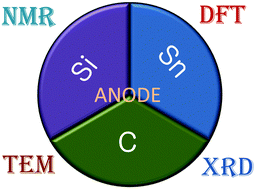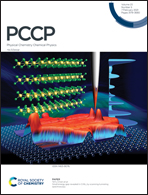Unveiling the stability of Sn/Si/graphite composites for Li-ion storage by physical, electrochemical and computational tools†
Abstract
Complex materials composed of two and three elements with high Li-ion storage capacity are investigated and tested as lithium-ion battery (LiB) negative electrodes. Namely, anodes containing tin, silicon, and graphite show very good performance because of the large gravimetric and volumetric capacity of silicon and structural support provided by tin and graphite. The performance of the composites during the first cycles was studied using ex situ magic angle spinning (MAS) 7Li Nuclear Magnetic Resonance (NMR), density functional theory (DFT) calculations, and electrochemical techniques. The best performance was obtained for Sn/Si/graphite in a 1 : 1 : 1 proportion, due to an emergent effect of the interaction between Sn and Si. The results suggest a stabilization effect of Sn over Si, providing a physical constraint that prevents Si pulverization. This mechanism ensures good cyclability over more than one hundred cycles, low capacity fading and high specific capacity.

- This article is part of the themed collection: 2021 PCCP HOT Articles


 Please wait while we load your content...
Please wait while we load your content...